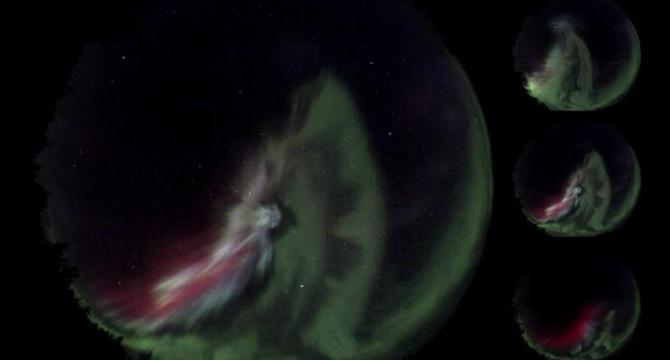Bioengineer
2w
73

Image Credit: Bioengineer
UCalgary Scientists Uncover the Mystery Behind White Patches Near Northern Lights
- Researchers at the University of Calgary have uncovered the cause of the mysterious whitish-grey patch that accompanies northern lights, found to be referred to as “structured continuum emission.”
- The structured continuum emission, acting as a persistent heat source, contrasts starkly with the visual complexion of northern lights, comprising dynamic greens and reds.
- Advancements in camera technology have played a crucial role in analyzing the auroras, assisting scientists in the precise characterization of these natural phenomena.
- Structured continuum emissions and Strong Thermal Emission Velocity Enhancement are posited as having comparable spectral content but differ in their association with auroras.
- The research sheds light on complex atmospheric processes, informing climate research and space weather prediction.
- The financial backing of programs, including the Canadian Foundation for Innovation, facilitates the acquisition of advanced instruments, including spectrographs and RGB.
- This research showcases the significance of student involvement and contributes to a growing knowledge of atmospheric science.
- The structured continuum emission presents scientists with an invitation for further exploration, bringing us closer to a full understanding of the remarkable phenomena gracing our night skies.
- Scientists hope the liberation of the structured continuum emission cause will inspire further research and technological innovations, deepening our understanding of atmospheric science and the cosmos.
- This research published in Nature Communications answers lingering questions and raises new ones, prompting more critical exploration of the mysteries of the universe.
Read Full Article
4 Likes
For uninterrupted reading, download the app